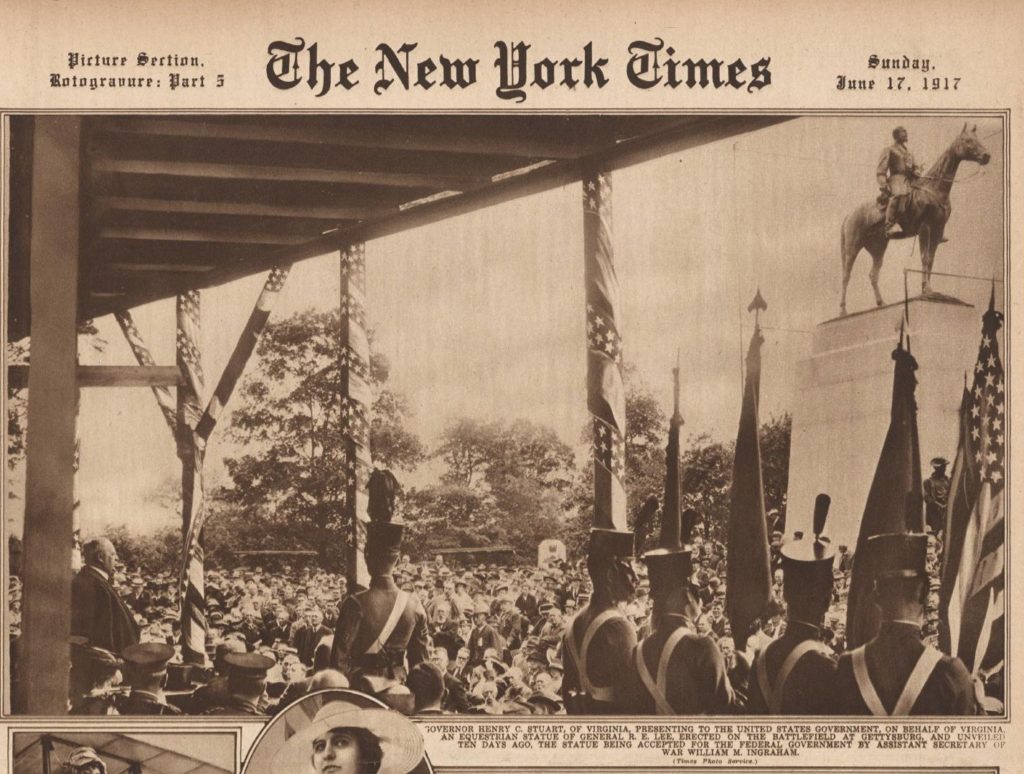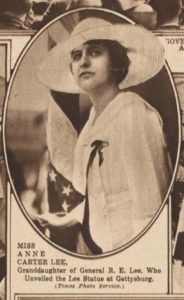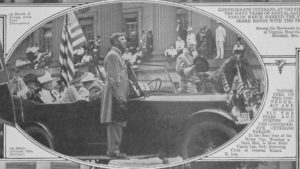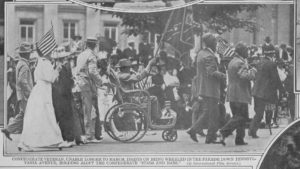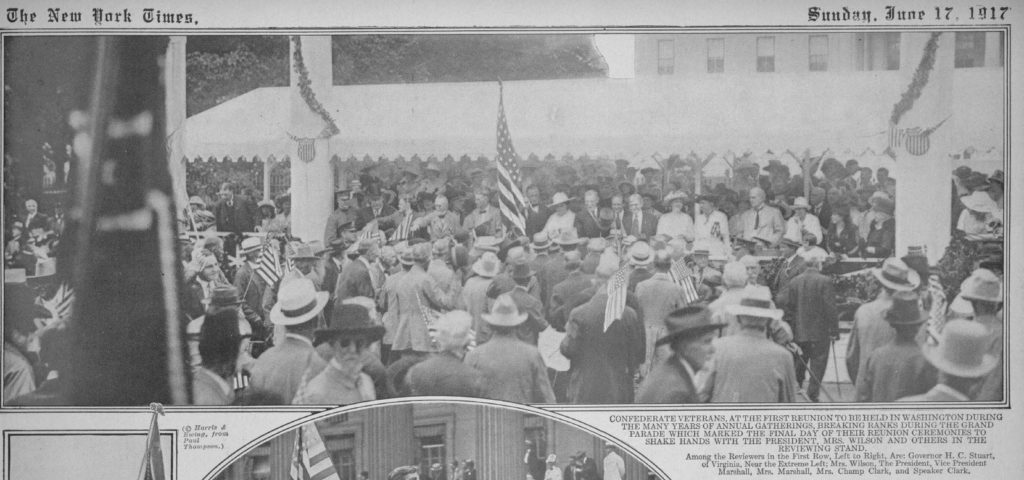This is the Showing forth of the Inquiry of Herodotus of Halicarnassos, to the end that neither the deeds of men may be forgotten by lapse of time, nor the works great and marvellous, which have been produced some by Hellenes and some by Barbarians, may lose their renown; and especially that the causes may be remembered for which these waged war with one another.
From The New-York Times June 9, 1917:
UNVEIL GETTYSBURG SHAFT.
Many Veterans Attend Ceremony In Honor of Virginia’s Dead.
Gettysburg, Penn., June 8. – A memorial surmounted by a statue of General Robert E. Lee was unveiled on Gettysburg battlefield today in the presence of many Confederate veterans who had come from their annual reunion at Washington, and also many Grand Army veterans.
The memorial, erected by the State of Virginia to her soldier dead, was accepted for the Government by William M. Ingraham, Assistant Secretary of War, who declared it was characteristic of the American people that both North and South could meet as one great reunited family on the celebrated field.
The Virginia Monument has hit the century mark, but how much longer will it be there? Will it be next? In a post at TOCWOC – A Civil War Blog Fred Ray discussed the removal of Confederate monuments in New Orleans and possibly elsewhere. Mr. Ray wrote that Mayor Mitch Landrieu spoke “about what a fine fellow he was for erasing the city’s history.” That made me think of an alternative translation of Herodotus:
Here are presented the results of the enquiry carried out by Herodotus of Halicarnassus. The purpose is to prevent the traces of human events from being erased by time, and to preserve the fame of the important and remarkable achievements produced by both Greeks and non-Greeks; among the matters covered is, in particular, the cause of the hostilities between Greeks and non-Greeks.
Here’s some photographic evidence of the Confederate reunion in the nation’s capital prior to the dedication at Gettysburg:

